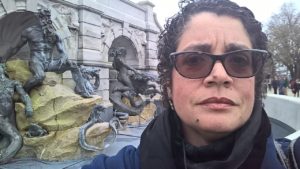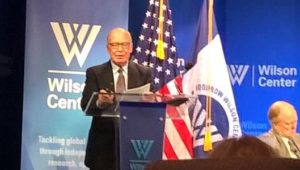One of the problems of living next to one of the richest, most vibrant research communities in the country is actually carving out the time to take advantage of its resources. Spring break is such a time. The very things that help support my career here – my position as Master Instructor (Senior Lecturer at other institutions in the United States) and my family responsibilities make it very complicated to actually carve out a solid block for my own personal research. (Overwhelmed; Work, Love, Play When No One Has the Time by Brigid Schulte is a great primer on these challenges). However, I did take one day to work on independent research. And it reminded me why it is that research in D. C. pretty much tops research everywhere else – sorry Boston, Saint Petersburg and Moscow!
Morning was spent at my favorite reading spot: Library of Congress. The last few years, as my teaching responsibilities have multiplied, my ability to read for myself has shrunk. I do not get to read deep as often as I would like – shshsh! don’t tell my students! – but this morning got me to looking at primary and secondary documents related to a presentation on Kalatozov’s I Am Cuba that I will reading at Midwest Slavic in a few weeks.
Lesson re-learned this day: proper materials and proper technological support can turn what would otherwise be a two to three week project into a one morning project.

In front of the Library of Congress, my favorite place in Washington D. C. Never mind the Supreme Court is next door and the Capitol right across the street.
Lunch was spent with an old friend at a pub down by the White House, across the street from the Department of Treasury building. It was wonderful not to have to worry about a children’s menu, as I sped past families enjoying the DC-ness of DC during spring break.
However, the highlight of the day was going to the Woodrow Wilson Center for a presentation co-sponsored by the Kennan Institute: “The Maisky Diary: The Wartime Revelations of Stalin’s Man in London,” held on Tuesday, March 15.
Gabriel Gorodetsky is Quonam Fellow of All Souls College, Oxford. The presentation focused on the diaries of Ivan Mikhailovich Maiskii, Soviet ambassador to the United Kingdom for the majority of the Stalin period. Professor Gorodetsky has worked on the publication of Maiskii’s diaries for a lot of years. Maiskii’s story tends to deviate from the regular narrative old school Sovietologists have internalized. A former Menshevik, he rose up the diplomatic ranks and survived in part because of the contacts he cultivated through a lifestyle that normal Marxists might qualify as bourgeois decadent. What proves even more amazing was that the diaries survived as classified documents until the end of the Soviet era. They shed light in part on the way that the image of the Soviet Union evolved within the ranks of the British ruling class as the Nazi regime rose to power. And somehow Maiskii managed to survive.
I regret my father has already passed on – this sounds like the kind of narrative he would enjoy. Diaries of this kind, in particular, play an integral part in illuminating the complicated dynamics of the Stalinist regime. The level of repressions and censorship of the period really makes scholars of the humanities and social sciences much more like archaeologists. It is vital because, as the character of Eliza in Lin-Manuel Miranda’s Hamilton asks, “…And when my time is up/Have I done enough? COMPANY: Will they tell my story?…” This is the kind of book that can help us contemplate the danger of the mix of charisma, authoritarian – or in Stalin’s case, totalitarian – instincts, a well-defined nationalist ideology, and a willingness to make violence against civil society by purging it of “opportunist elements…”


